Text
On April 30th while reporting on the Students Revolution at Columbia University, CNN anchor Kasie Hunt made reference to Hind Rajab as 'A Woman Who Was Killed in Gaza."
Hind Rajab was six years old.
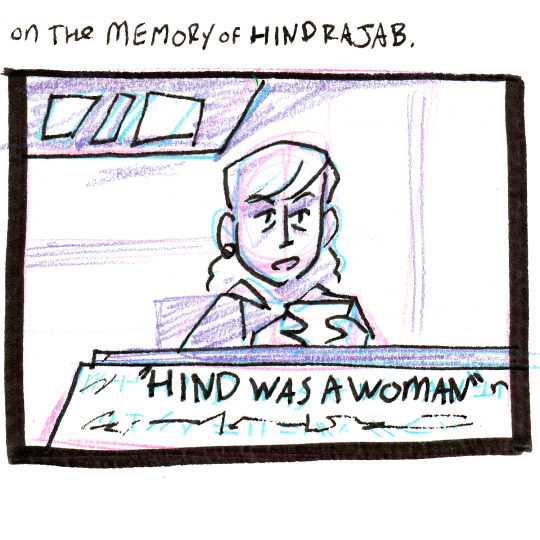

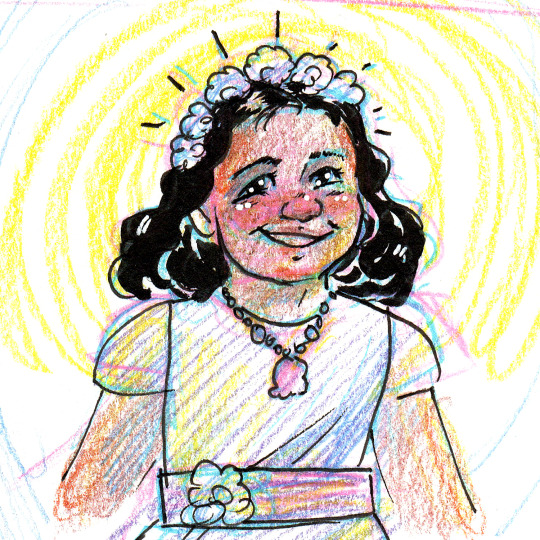
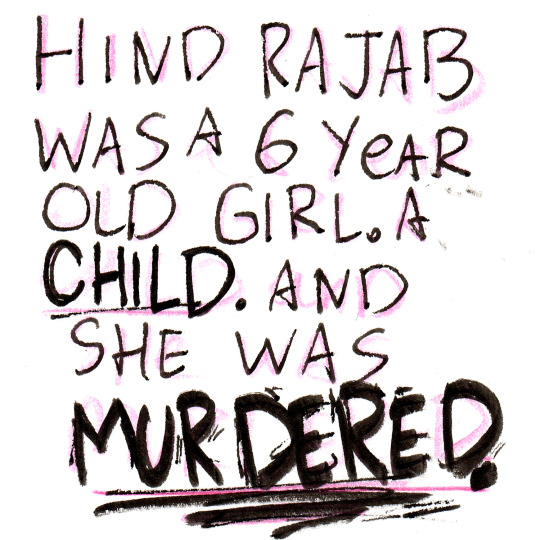
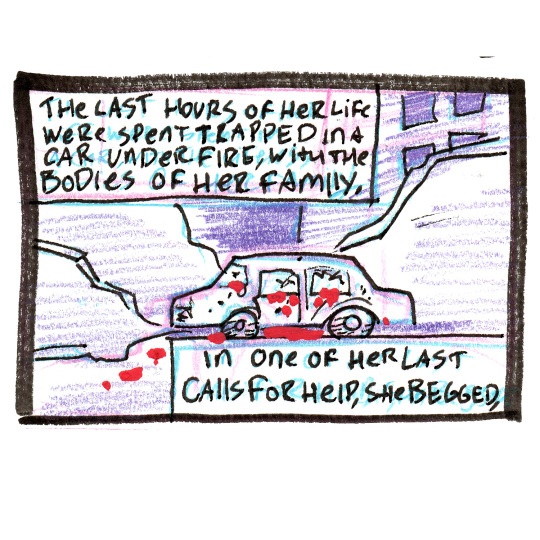
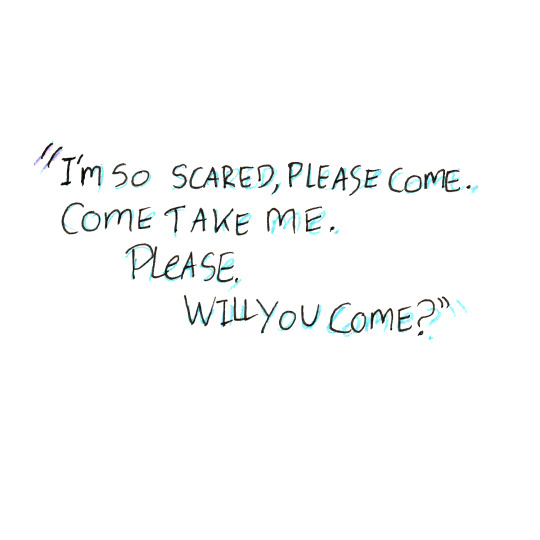



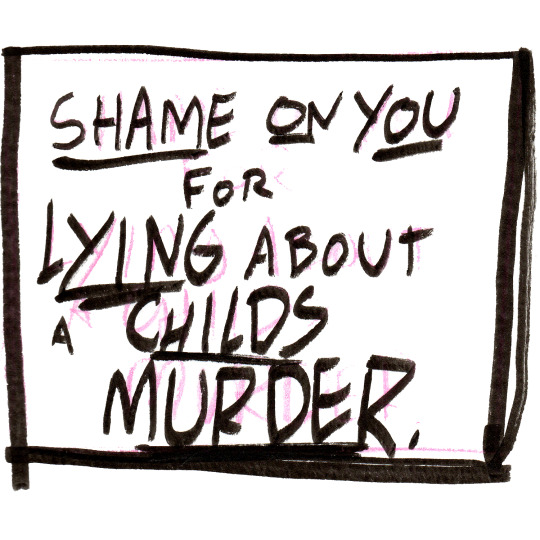
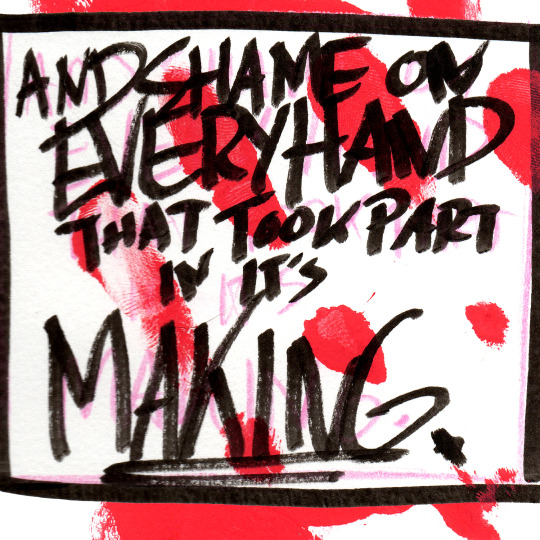
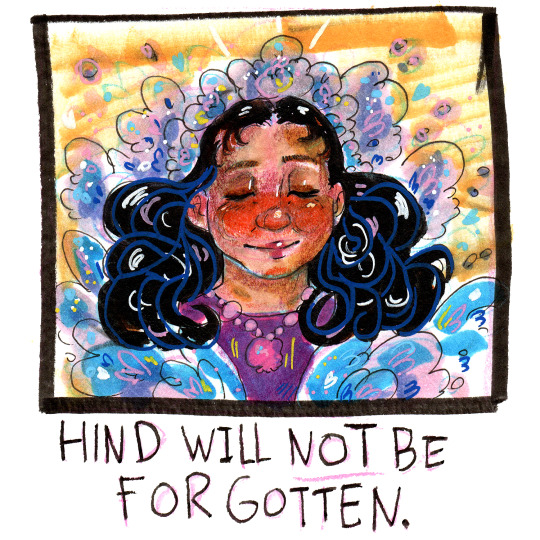

26K notes
·
View notes
Note
Can you talk more about Elle Woods being autistic in Legally Blonde? :)
Elle strictly follows the traditional rules of femininity as dictated by southern californian culture, with special interests in the color pink, fashion, and her parter. She is extremely trusting and takes people literally when they are kind to her which is OK when she “stays in her place” as gender norms dictate, but as she leaves her familiar habitus in which she has cultivated social, cultural, and symbolic capital through careful study and adherence to these social norms, she finds herself ostracized and abused. Even though she is hyperlexic and has a high IQ (as traditionally defined), she has difficulty reading social cues in new environments. She also copes with transitioning into new circumstances by falling back onto familiar routines of personal hygiene and filling her personal space with familiar items. She is also extremely ethical to her personal morals which gets her into difficulty when social norms dictate being flexible with one’s ethics. She also does not privilege human companionship over other species.
damn…. I should write an article on this. This was fun. Mostly because I’m the Elle Woods flavor of Autistic in many ways.
Elle Woods is the kind of Autistic that most neurotypicals can’t recognize because she is camouflaged in “socially acceptable” practices, but to someone who is also Autistic is clear that the way she approaches these practices is neuroatypical. Many Autistic women survive and ‘blend in’ by making traditional feminine norms their special interests, and their neuroatypicality can often become disabling only when they change habitus, which means the circle of people and environment and all the culture and practices that go with it. They spend a lifetime getting “good” at one habitus and fitting in, but suddenly stand out as “different” when their habitus changes. Autistic women are also often extremely trusting, and when they are “attractive” by traditional feminine norms they don’t question when people are kind to them. They assume people mean well unless they say otherwise, making them highly susceptible to abuse and bullying, often by fellow women. Many Autistic women have above average IQs (by traditional definitions) and apply these abilities to traditional feminine practices such as fashion, art, homemaking, pop culture, etc. So they don’t fit the stereotypes of the “absent minded professor” which is extremely gendered male and white. As many Autistic people often feel that other people, often partners, are their special interests, some Autistic women are camouflaged by their focus and dedication to a boyfriend or husband, because gender norms literally normalize this as an acceptable, desirable practice. Practicing their ethics with strict black and white rules, they can appear to be extremely “pious,” religious, and “dedicated” wives and mothers, which again is normed by gender practices and camouflaged. If they experience OCD qualities, these are often practiced in homemaking-related skills like cooking, cleaning, and personal hygiene, again… all camouflaged by gender norms as simple being a “good girl” and a “good wife and mother.”
18K notes
·
View notes
Text
How do you write healthy parent-child relationships?
118K notes
·
View notes
Text
EY ITS FINALS SEASON!
GOOD LUCK ON YOUR EXAMS!
GOOD LUCK ON YOUR ESSAYS!
GOOD LUCK ON YOUR PRESENTATIONS!
GOOD LUCK ON YOUR FINAL PROJECTS!
GOOD LUCK!!! YOU’VE MADE IT THIS FAR!!
and a gentle reminder to take breaks, and get a snack and some water. Don’t forget to take a moment to breathe.
and if you can, try to do something nice for yourself after its all over. No matter how it turns out, you struggled and you survived so you deserve something nice :)
29K notes
·
View notes
Text
New REBLOG Game
Just fucking lie about the previous poster
101K notes
·
View notes
Text
CREATING AUTHENTIC DEAF AND HARD OF HEARING CHARACTERS: A WRITER'S JOURNAL
Introduction
Creating authentic characters in your writing is essential for engaging storytelling, and this includes characters who are deaf or hard of hearing. To craft a character that accurately represents this community, it's crucial to do your research, gain a deep understanding of their experiences, and portray them with sensitivity and respect. In this journal, we'll explore how to write a deaf or hard-of-hearing character, including key information and preparation steps.
Understanding Deaf and Hard-of-Hearing Characters
Research: Start by researching deaf and hard-of-hearing individuals' experiences, challenges, and culture. Read books, articles, and personal stories, and watch documentaries or interviews featuring members of the Deaf community.
Consult with Experts: Reach out to members of the Deaf community or experts in Deaf studies to gain insights into their experiences. They can provide invaluable guidance and help you avoid common misconceptions.
Diversity Within the Community: Understand that the Deaf and hard-of-hearing communities are diverse. Some individuals communicate using sign language, while others rely on lip-reading, cochlear implants, or hearing aids. Be aware of these differences when creating your character.
Character Development
Backstory and Identity: Consider your character's background. Were they born deaf, or did they become deaf later in life? How do they identify within the Deaf community? Understanding their identity and experiences will shape their character.
Language and Communication: Decide how your character communicates. Are they fluent in sign language, or do they primarily rely on lip-reading and spoken language? Their communication style will influence their interactions with other characters.
Cultural Awareness: Explore the cultural aspects of the Deaf community. Understand the importance of Deaf culture, including its history, art, and values. Incorporate these elements into your character's life when relevant.
Writing Tips
Dialogue and Communication: When writing dialogue for a deaf or hard-of-hearing character, be mindful of their unique communication style. Use visual cues, body language, and facial expressions to convey emotions and context.
Access to Information: Consider the challenges your character may face in accessing information. This could involve issues with closed captioning, subtitles, or accommodations in educational or work settings.
Social Interactions: Depict social interactions realistically. Show how your character navigates conversations, group dynamics, and social events within their community and with hearing individuals.
Preparation
Sensitivity Readers: Consider hiring sensitivity readers who are part of the Deaf or hard-of-hearing community to review your work and provide feedback. Their insights can help you avoid stereotypes and inaccuracies.
Learn Sign Language: If your character uses sign language, take the time to learn at least basic signs. This will not only enrich your writing but also demonstrate your commitment to accuracy.
Beta Readers: Seek feedback from a diverse group of beta readers who can assess the authenticity of your character and offer constructive criticism.
Engage with the Community: Attend Deaf community events, workshops, or online forums to immerse yourself in the culture and better understand the perspectives and experiences of deaf and hard-of-hearing individuals.
Creating a deaf or hard-of-hearing character that resonates with readers requires dedication, empathy, and thorough research. By following these steps and embracing the rich culture and diversity of the Deaf community, you can create a character that is not only authentic but also promotes understanding and inclusivity in your writing. In addition, when writing dialogue for your deaf or hard-of-hearing character, remember:
It's important to clarify why, when writing dialogue for a deaf character, you should continue to use structured English grammar and not sign language structured grammar.
Maintaining Structured English Grammar:
Readability: Writing in structured English grammar ensures that the text remains accessible and comprehensible to all readers, including those who may not be familiar with sign language or Deaf culture. It avoids potential confusion that could arise from using sign language grammar in written text.
Universal Understanding: English is a global language, and adhering to its grammar rules allows for a wider audience to understand and engage with your story. Sign language grammar varies between different sign languages, making it less universally applicable in written form.
Respect for the Medium: While sign language is a rich and expressive mode of communication, it is primarily a visual and gestural language. Attempting to replicate sign language grammar in written text can be cumbersome and may not fully capture the nuances of sign language communication.
Balance of Realism and Readability: Striking a balance between authenticity and readability is crucial in storytelling. Maintaining structured English grammar while depicting a deaf character's interactions helps convey the character's experience without compromising the reader's ability to follow the narrative.
As an illustration, consider the following text:
Dialogues with Descriptive Sign Language:
Sarah greeted John with a warm smile, her hands moving gracefully as she signed, "Hi, how are you?"
John returned the greeting in sign language, his expressions mirroring his words. "I'm good, thanks. Did you see the new movie?"
Sarah's eyes lit up as she signed back enthusiastically, "Yes, I loved it!"
In summary, using structured English grammar when writing dialogue for a deaf character is a practical and respectful choice that ensures your writing remains inclusive and accessible to a broad audience while still authentically representing the character's identity and experiences.
Furthermore, it's essential to avoid creating a character who is overly perfect or one-dimensional. In real life, we understand that everyone has imperfections and complexities, regardless of whether they are deaf or hard of hearing. Therefore, it's entirely acceptable to depict your character as a villain with a hearing issue if that aligns with your storytelling goals.
1K notes
·
View notes
Text
Even drug dealers are boycotting❤️❤️❤️

33K notes
·
View notes
Text
I know people like to theorize or have headcanons that Aziraphale and Crowley actually had their first kiss earlier in the timeline than s2 in 2023 and just chose never to speak of it again, but going by the fact that Aziraphale almost sobbed and threw up and died from Crowley’s cringefail turbo virgin lip smash, I really don’t think that’s the case tbh
4K notes
·
View notes
Text
thank you for the tag!!
hozier, of course!
what’s your gender? would that i
how do you feel? eat your young (bekon’s choral version)
if you could go anywhere? northern attitude (ft. hozier)
fav mode of transportation? damage gets done
your best friend? nobody
fav time of day? sunlight
if your life was a tv show? to noise making (sing)
relationship status? francesca
your fears? to be alone
tagging: @ackermanyuki @fandomsandflyingstingrays and anyone else who wants to join!! really need more mutuals to tag
Using only song titles of one artist/band, cleverly answer the questions and then tag people
I was tagged by @automatisma, this was super fun thank you!
I did just completely forget about this one sorry but I'm glad I remembered! I chose Queen <3
whats your gender – Killer Queen
how do you feel – I’m Going Slightly Mad
if you could go anywhere – Barcelona
fave mode of transportation – The March Of The Black Queen
your best friend – Princes Of The Universe
favorite time of day – Sleeping On The Sidewalk
if your life was a tv show – The Show Must Go On
relationship status – Crazy Little Thing Called Love
your fears – Under Pressure
I'm tagging @purpleatomicbreath, @despite-everything, @strongindependenttrash, @omnipah, @themostunoriginalpersonever, @coreinthian and whoever else wants to do this!
259 notes
·
View notes
Text
the backing track when circe sings “i can’t get you home, but i’ll get you to the underworld instead” will repeat in my head forever and ever
38 notes
·
View notes
Text
HAPPY CIRCE SAGA DAY!!!!
7 notes
·
View notes
Text
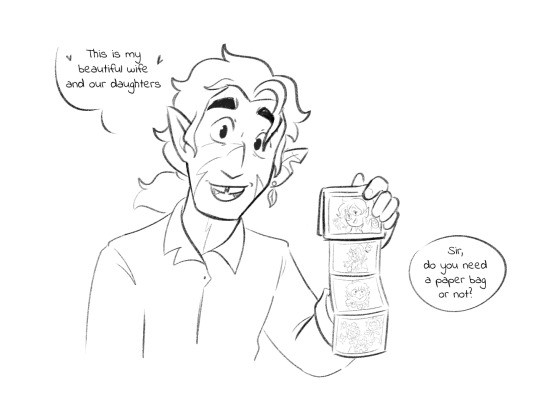
Never beating the "I love my family so much" allegations
2K notes
·
View notes
Text

just finished the owl house for the first time. can you guess who my favs are
7K notes
·
View notes
Text
nobody did a mother-daughter relationship better than starkid with trail to oregon and i will stand by that
#i don’t recommend listening to when the worlds at stake and lost without you one after another#but do it#the trail to oregon#starkid#starkid productions#theatre#theatre kid#musical theatre
28 notes
·
View notes
Text
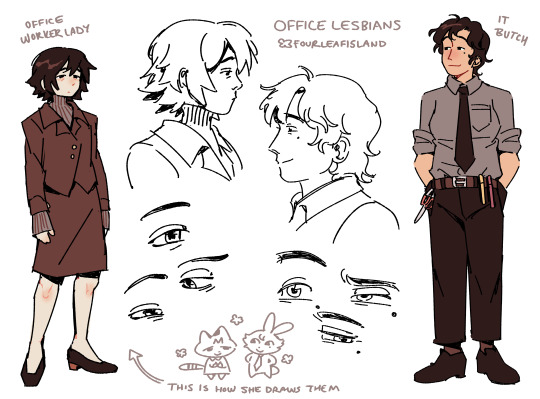
i designed office worker ocs while studying fashion photos and joked about writing an office worker yuri but guys i dont think its a joke anymore
12K notes
·
View notes
Text
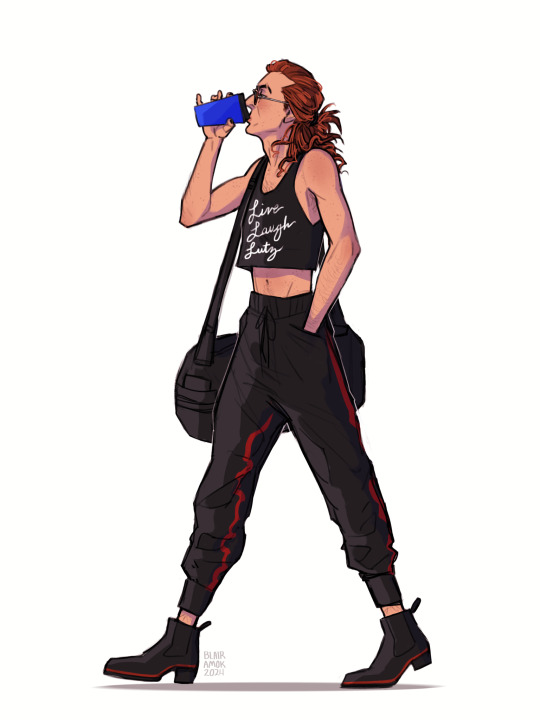
on his way to lutz on these sluts
2K notes
·
View notes
Photo

Some character designs with some…atypical color choices? I guess. I don’t know what’s going on in that area.
This is Nimona and her supervillain friend (He doesn’t have a name yet, I’m working on that). Nimona is his sidekick/squire, they’re like the Batman and Robin of slightly Medieval villains, but she’s actually way more evil than him. He does what he does to make a point, and he doesn’t really want anyone get hurt - Nimona just gets a kick out of destroying stuff.
I’m going to attempt to make a two page comic with them? We’ll see how this goes.
108K notes
·
View notes